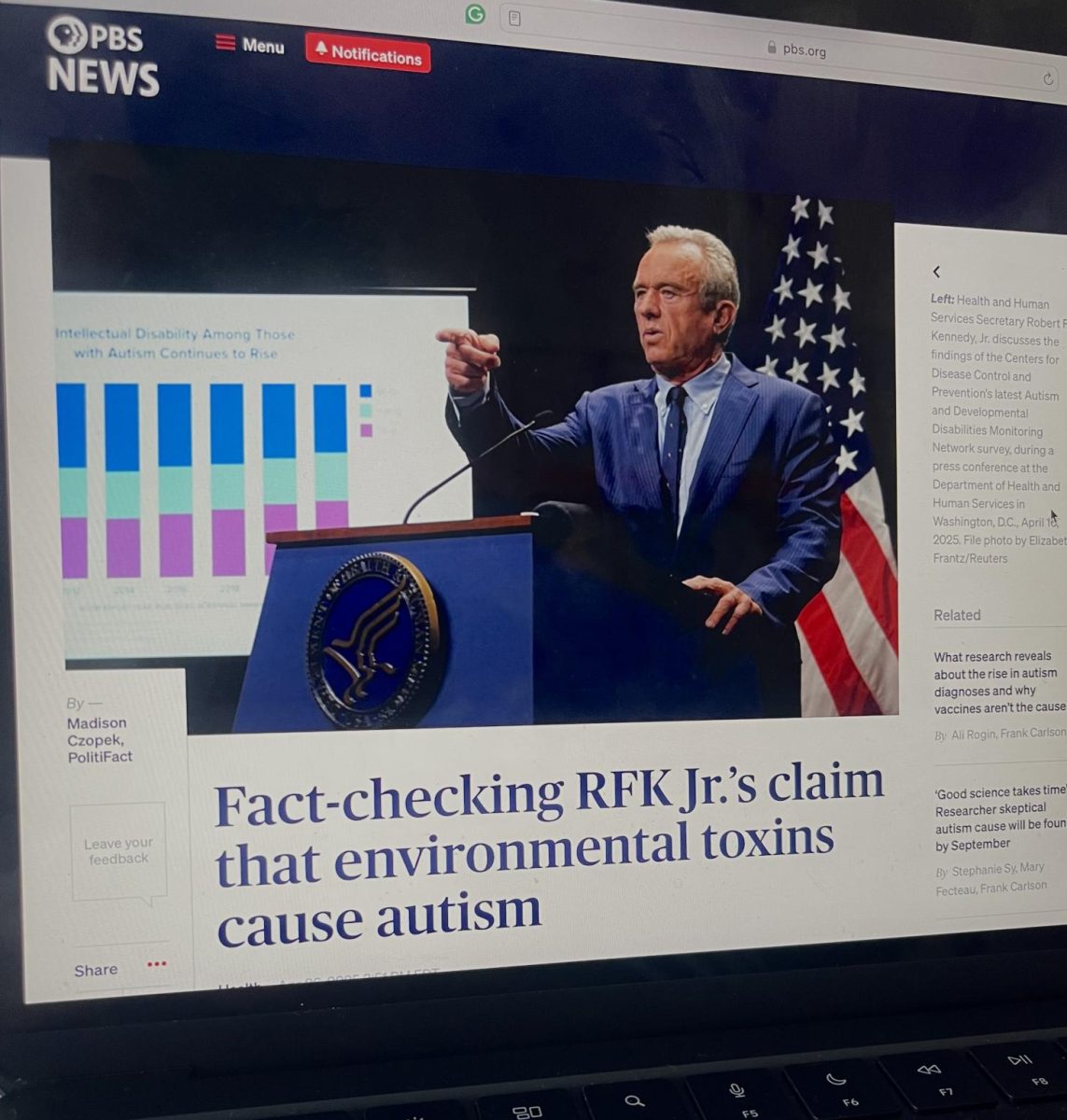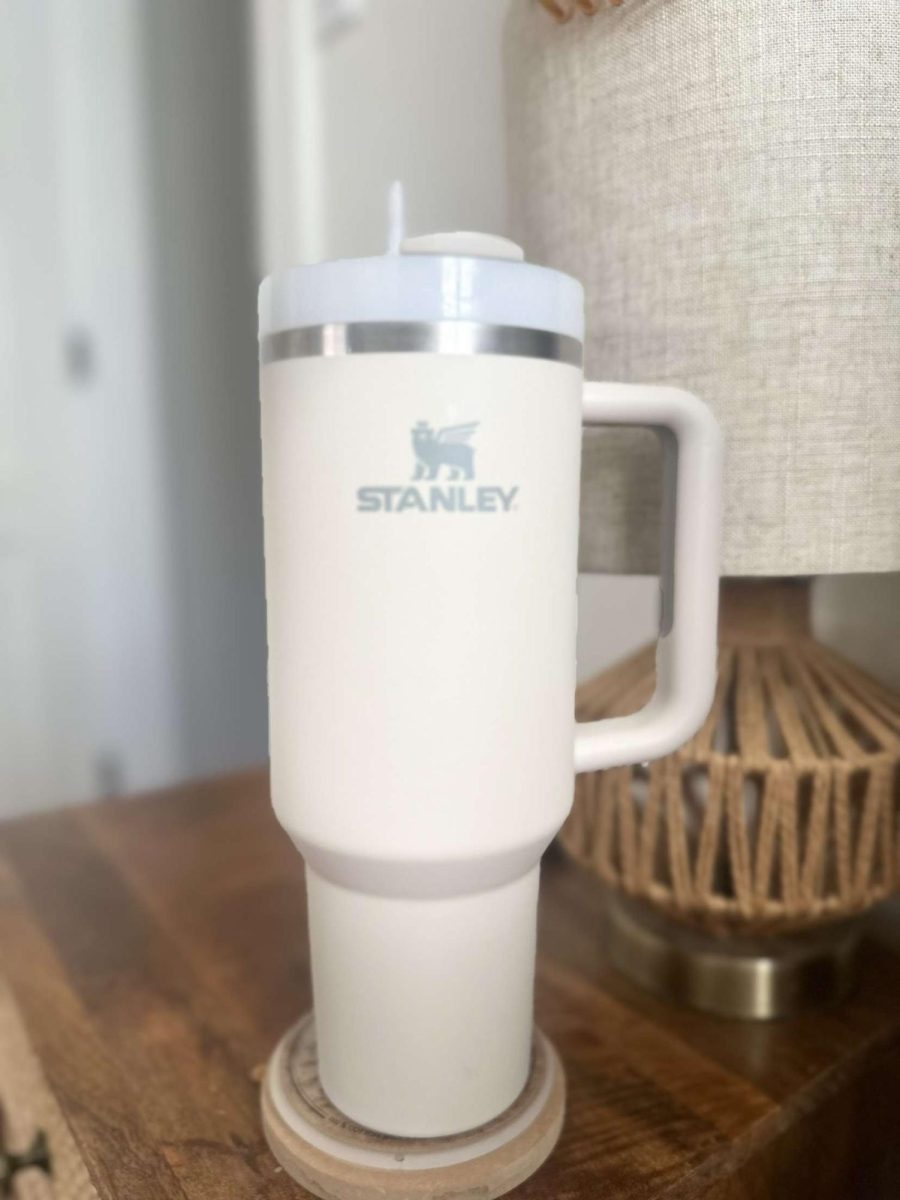Although trends come and go, one of the biggest fads lately has been Stanley’s tumblers. To be a little more specific, I’m talking about the Stanley Adventure quencher.
In 2016, the Stanley company released its 40-ounce tumblers for the public to enjoy, but recently, there have been rumors on the internet going around that these beloved tumblers contain lead.
On TODAY news, on January 24, 2024, that concern was confirmed, though to a certain degree. It was noted by a Stanley spokesperson that these tumblers do in fact have lead but can only become dangerous if the button on the bottom of the cup is severely damaged or detached, which with the information provided, won’t be a problem.
“I accidentally kicked my Stanley down the stairs and when I went to pick it up, it was perfectly fine,” said Nicole Bergmann, a Corydon staff reporter and PEACE freshman.
The deeper we dig into this tumbler rabbit hole, the more we can figure out where things are headed for the future of this cup-ecstatic community. To do this, we can take a look at the experience of other companies.
“Neither my wife nor I had a background in stainless steel cups. I got my degree in mechanical engineering. That’s about it,” said Soo Jin, owner of the Cupkin on his website.
On July 20, 2023, Cupkin had a massive recall of over 300,000 units due to their tumblers containing an exceeded federally approved amount of lead content. When it comes to searches on the internet and social media, it’s possible that this information could have gotten tied in with Stanley’s concerns, irritating the issue even more.
Lead is a natural element found within the Earth’s crust. While being useful for items like car batteries, weights, and ammunition, it is not safe for human consumption. If you have any concerns about being exposed to lead, call Poison Control at (800) 222-1222.
Although both brands of tumblers have lead inside of them, Cupkin was the one called back. Cupkin follows a similar process to Stanley. Before sealing their cups, they include a pellet that contains lead and properly seal it. Unlike Stanley, this pellet contains an exceeded federal amount of lead, which is unfit to sell to anyone, sealed or not.
As noted by a Stanley spokesperson on TODAY.com, their cups make use of “an industry-standard pellet to seal the vacuum insulation” of their cups. Not only does this pellet contain lead, but to seal up this pellet, they melt a mixture containing lead. Then to cover that potion up, they place a button over it that displays their logo. Once it’s sealed, this button isolates the lead from the consumers’ beverage.

With all of the Stanley business being cleared up, it’s come up that there’s a separate tumbler issue that is tumbling its company way out of stock. Commonly sold on Amazon, Mercari, and eBay, Cupkin sells 8-ounce and 12-ounce stainless steel cups that mimic the Stanley brand. Years after the release of their tumblers in August 2019, which is months after the rise of Stanley Adventure Quencher came about, Cupkin ran into legal trouble.
Now for the real question, how do Stanley consumers feel about this claim? Unsurprisingly, some people are still very skeptical about the lead content in their tumblers. Some people are even going out of their way to return their cups, or just to stop using them altogether.
However, there’s a large portion that continues to use their Stanley, using their reasoning of convenience, price, or aesthetics. “Although I wasn’t aware of the lead before, I’m still going to use it, it’s helpful, and it’s a bit pricey. It’s not like I’m going to throw it out,” said Donna Ayala, an MBA junior.
Some have even resorted to alternatives, like Owala, Yeti, or Hydro Flask. They claim that although the lead in Stanley cups isn’t harmful to consumers, it’s a general problem that there’s lead inside of their tumblers, period. This is coming from a place with their consumers in mind, ranging from all sorts of ages, one of those categories being children.
This topic has been well documented by the CDC, one of the biggest side effects of lead exposure is a range of neurological diseases and lifelong issues. With something as low as a level 3 lead exposure, heavy migraines, brain damage, nerve damage, and in some cases, Parkinson’s disease, could become possibilities.
Although concerns are dying down, make sure to keep an eye on the button underneath your Stanley, and make sure it’s where it’s supposed to be. If you have worries concerning whether the button underneath your Stanley has been knocked out of place, you could fill out a warranty claim on their website, which concerns replacing or repairing your Stanley.




























Maddy Morgon • Mar 20, 2024 at 4:20 pm
On February 26th 2024, Bailey Body wrote an article titled “ Stanley’s Tumbling Issue”. In her article she goes on a deep dive into the history of the Stanley cup and how they may contain led. Body does a good job at elaborating on how the only way the lead in the cup is potentially harmful is when the bottom button of the cup is severely damaged or even removed. Body also does a great job at comparing Stanley to other cup brands such as Cupkin explaining how Cupkin had a major recall due to a dangerously high lead percentage and how Stanley does not have this issue. Body also does a great job at including news articles, personal experiences and other credible sources to support her evidence. As someone who owns one of these 40 ounce Stanley cups, after reading Body’s article, I quickly realized that I should pay much more attention to the button on the bottom of my cup.
Arianna Garcia • Mar 20, 2024 at 12:14 pm
On March 4, 2024, Bailey Body wrote an article titled, “Stanley’s Tumbling Issue.” Body discussed the rumor that was spreading about the popular Stanley Tumblers containing lead which can be very dangerous to consumers. She was able to provide the issue and the answer very quickly which is very important in the organization of journalism writing. Body made the article very interesting and even went above and beyond to provide extra information revolving around knock off Stanley brands like Cupkin. In addition, she provided credible quotes from students who own Stanley’s as well as information from CDC and the opinions of the Cupkin owner. Through this writing, Body proved herself to be an incredible writer by providing multiple perspectives and a clear organizational structure. I thought this article was extremely informative and relevant as Stanleys are seen constantly amongst high school students. My only question is what is Stanley doing in response to these allegations? Will they renovate their design?
Elianni Rodriguez • Mar 20, 2024 at 10:59 am
On February 26, 2024, Bailey Body wrote an article titled “Stanley’s Tumbling Issue” to recognize that these adored tumblers contain lead. This article highlights that although these cups contain lead, it only becomes dangerous if the button at the bottom of the cup is severely damaged or detached. Body includes the different experiences and perspectives of those who own this Stanley cup reporting that after their cup had a few unfortunate falls, it was completely fine. They also include a similar lead sealing tactic used by both Stanley and another company, Cupkin, to shed light on how lead is kept from being consumed. I praise the author for including the phone number for Poison Control because if there are people reading this article who own a Stanley cup and are unaware of this information, they can call in regards for their safety. I was surprised to know the process of how Stanley seals the lead from being consumed and how there is a certain legal limit to how much lead is fit to sell. One thing I’d suggest is to include a few alternatives on what we could use other than a Stanley cup if those who are reading this are influenced to no longer use them.
Ethan Barnhart-Ross • Mar 19, 2024 at 11:11 pm
On February 26, 2024, Bailey Body wrote an article titled “Stanley’s Tumbling Issue”. This is a very well written article that describes the topic of lead being inside of Stanley cups. The author did a good job going over all the details of the situation and explaining how other brands such as Cupkin have had to recall their products for going over the legal amount of lead which Stanley does not. The article also goes over the effects that lead poisoning can have on somebody if their Stanley is damaged and they are exposed to the lead. One way this article could be improved is if it went into more detail on why Stanley would decide to include lead in their tumblers if it can be dangerous and controversial. I like how the article includes anecdotes from Millikan students who own Stanleys to see what real people think and how some are considering other options, while others don’t want to throw out an expensive purchase.
Phoebe Mims • Mar 19, 2024 at 11:55 am
This article details the recent concerns with the popular Stanley tumblers and their high lead content which can be extremely dangerous to users when the button, placed at the bottom of the cups, gets severely damaged or is popped off. Body does a great job at using news reports, personal accounts, and other credible sources to explain the issue and inform the reader of how to stay safe. I was interested in reading this article because I have a Stanley tumbler myself, and have heard such rumors about their lead content on social media. However, after reading Body’s article, I realized I was misinformed and should pay much more attention to the button on my Stanley cup.
Body does a good job of showing multiple perspectives on how to handle the problem. In most cases, throwing out the cups, out of fear of the lead content, may be unnecessary when considering the cost of the cups. Instead, she suggests that keeping a close watch on the button, and discarding the cup if that becomes damaged, is a more reasonable solution. Body also succeeds at expressing the true extent of the issue by stating the possible effects a person may endure when exposed to the lead content of the Stanley (“…heavy migraines, brain damage, nerve damage, and in some cases, Parkinson’s disease…” [paragraph 15]). Overall, Body is very thorough in describing the problem itself, the different options to resolve it, and even giving background on the brand and other brands that have had similar problems with lead content. The only minor conventional-issue I saw in the writing was, in the first paragraph, calling the tumbler, “Stanley Adventure quencher” but then later referring to it as the “Stanley Adventure Quencher,” capitalizing “Quencher” and linking the product. Other than that inconsistency, I found this article captivating and very informative.